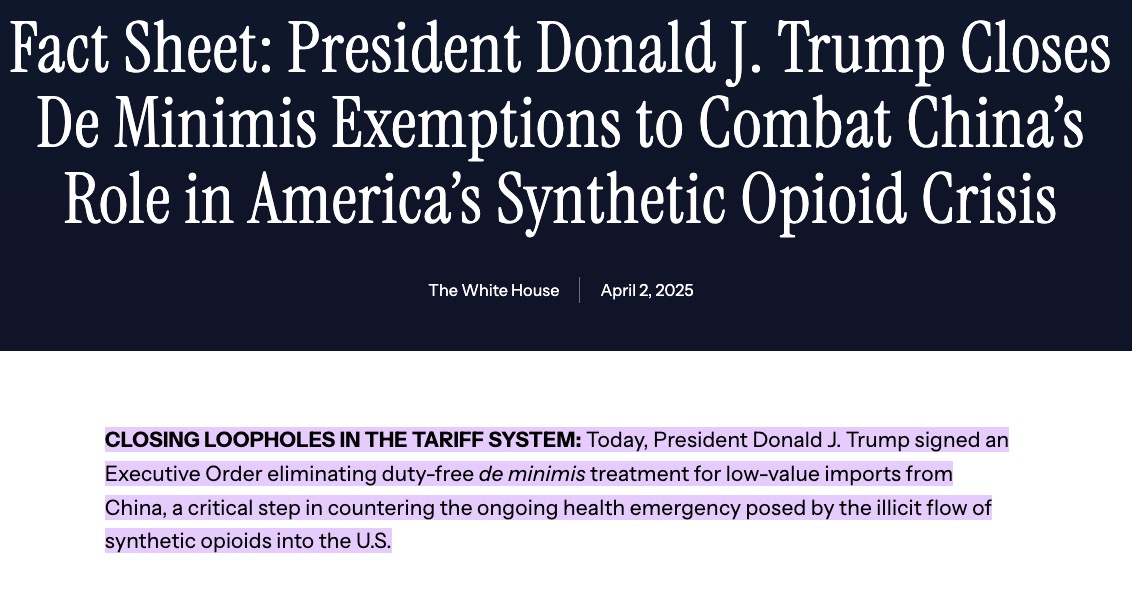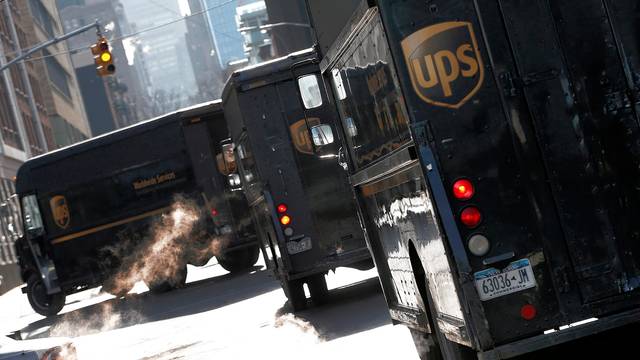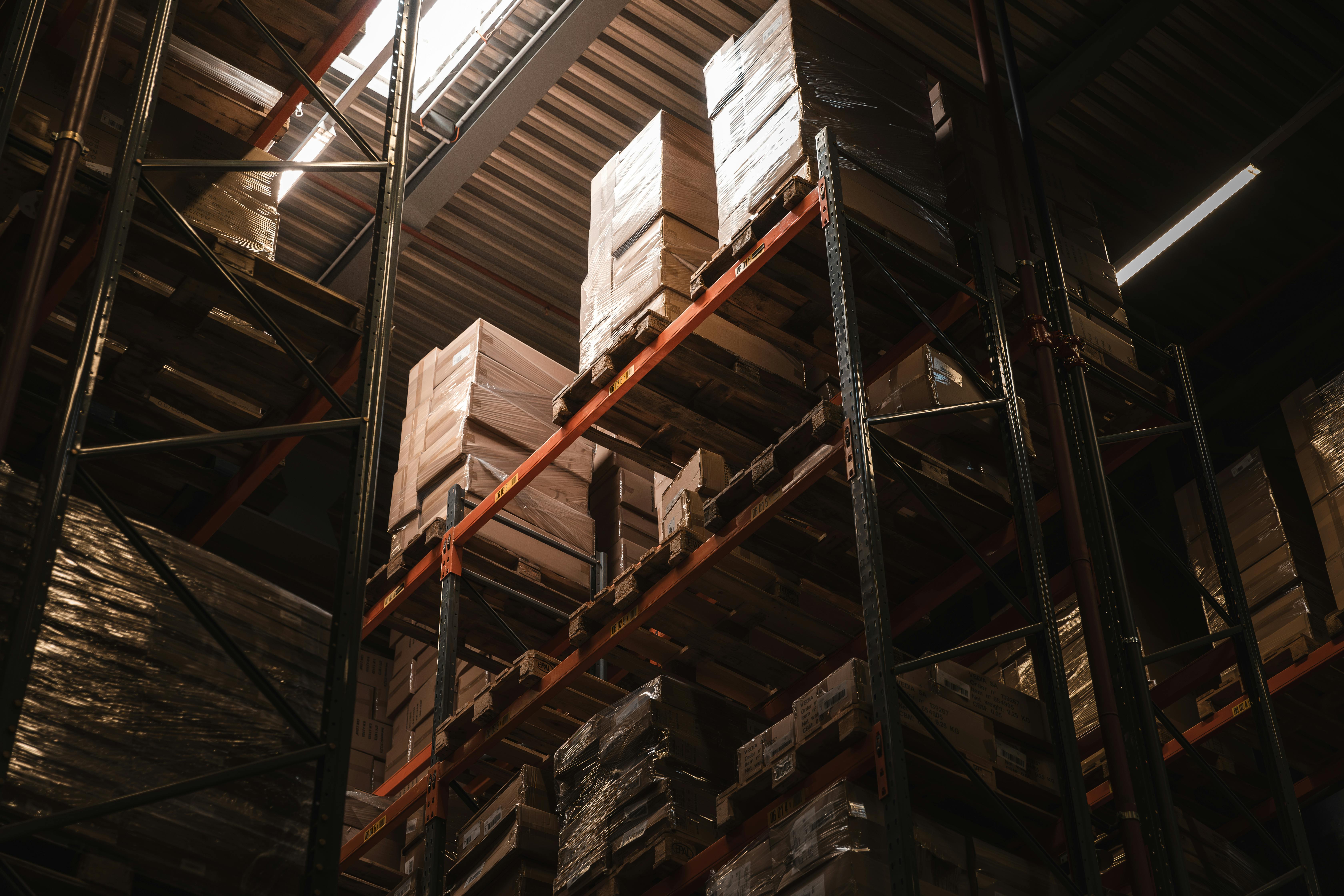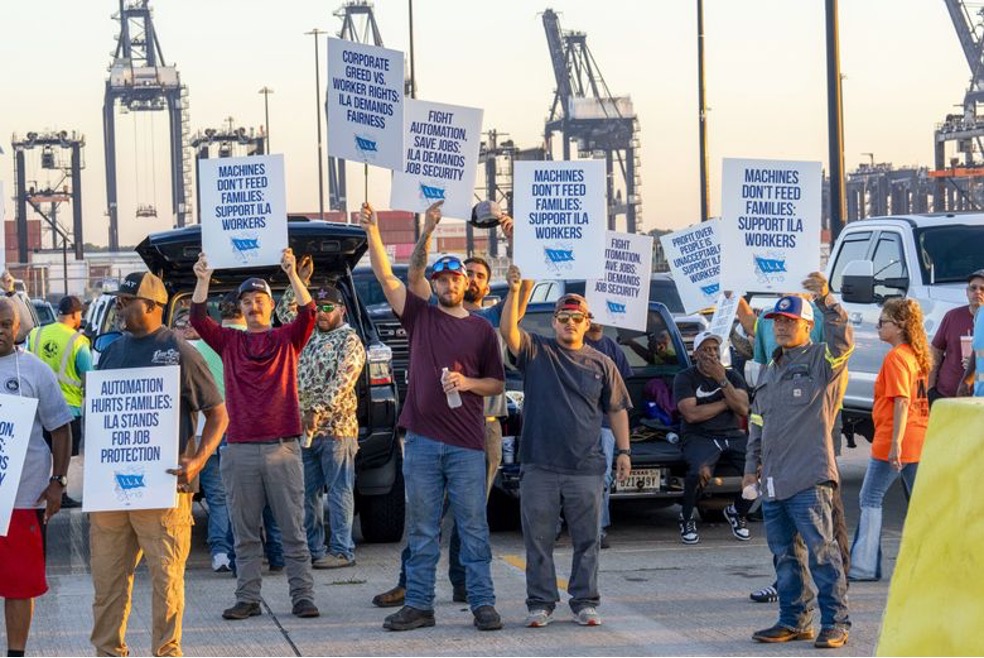In March 2025, President Donald Trump signed an executive order announcing the removal of duty-free de minimis treatment for low-value goods from China Mainland and Hong Kong. This policy change will take effect on May 2, 2025. Under the new regulation, all imported goods valued at $800 or below that previously qualified for duty-free entry will now be subject to applicable tariffs and must comply with standard entry and payment procedures. Additionally, low-value parcels transported via international postal networks will be taxed at a rate of 30% of their value or a minimum of $25 per item (increasing to $50 per item after June 1). This tariff replaces prior exemptions and other duty-related policies.

The new regulation aims to curb the inflow of illicit chemicals while tightening control over Chinese imports. However, this policy shift will have significant implications for cross-border e-commerce, overseas warehousing, and the logistics industry between China and the U.S.
Impact of the Policy Change on Cross-Border Logistics
1. Significant Increase in Cross-Border Logistics Costs
Previously, many small-value parcels entered the U.S. duty-free under the de minimis exemption, reducing costs for cross-border e-commerce businesses. With the new policy, all low-value shipments will be subject to tariffs, directly increasing logistics expenses. Businesses relying on direct shipping will face higher operational costs, while shipping carriers and logistics providers will need to adjust their systems to comply with new declaration and tax payment requirements.
2. More Complex Customs Clearance Process
Under the new regulation, low-value shipments may require formal customs entry rather than expedited clearance. This will result in stricter documentation requirements, pre-paid tariff obligations, and more rigorous declaration procedures, increasing the complexity of cross-border logistics and potentially causing customs clearance delays.
3. Impact on Delivery Speed
With the additional burden of tariff declaration and value verification—particularly for international postal shipments, which will be subject to separate tax payments—overall delivery times may be affected. Businesses will need to rethink their logistics strategies to mitigate potential clearance congestion and shipping delays.
Challenges for Overseas Warehouses
1. Growing Importance of Overseas Warehousing
As direct shipping becomes more costly, more businesses may shift to an overseas warehouse model, leveraging bulk shipping and local distribution to reduce expenses. This shift will drive increased demand for U.S.-based warehouses but will also pose new challenges in terms of storage costs, inventory management, and last-mile delivery efficiency.
2. Increased Complexity in Returns and Inventory Management
With the new tariff policy, returned goods may face secondary taxation or stricter declaration requirements, raising the cost of processing returns. Additionally, sellers will need to manage inventory more precisely to minimize the risk of unsold stock due to policy changes.
As a professional U.S. based logistics and warehousing provider, COPE offers end-to-end cross-border warehousing and distribution solutions to help businesses optimize their supply chains and mitigate the risks associated with policy changes.
With the implementation of this new regulation, the cross-border e-commerce and logistics industry between China and the U.S. is facing unprecedented challenges. However, by choosing the right logistics and warehousing partner, businesses can effectively reduce costs and enhance operational efficiency. COPE will continue to monitor policy updates and provide compliant, efficient, and cost-effective overseas warehousing and logistics solutions, ensuring smooth global trade operations.
For any overseas warehousing and logistics needs, feel free to contact us!



